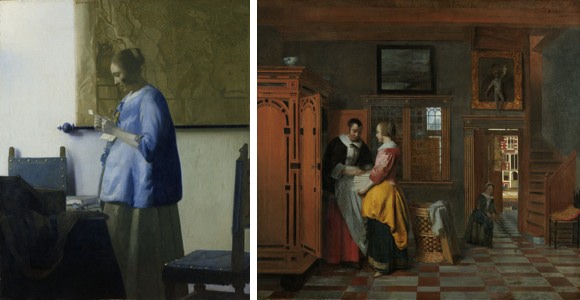
Right: Pieter de Hooch, ‘Interior with women beside a linen cupboard’ 1663
(both from Riksmuseum)
I just listened to Lang Lang playing Robert Schumann, Kinderszenen (Scenes from Childhood), Op. 15: No. 7, Träumerei (Daydream) (listen to an excerpt, below) and I was amazed of the expressive power of the pauses in the score, extended beautifully and sensitively by Lang Lang. It made me think of the art of Vermeer. Why is Vermeer so much more famous than, say, de Hooch, his contemporary, who also painted scenes of everyday domestic life? Look at the paintings above. Both artists excel at realism. Both paintings have interesting historical details and each one suggests a story behind the frozen moment. But, compared to Vermeer’s painting, de Hooch’s appears too cluttered. Vermeer’s, on the other hand, gives us adequate spaces for our eyes to rest, to contemplate the proportions and relationships between colours, textures and so on.
Similarly, when I listen to Schumann’s Träumerei, each time there is a rest (sometimes quite long), in my mind I hear the echoes of the music I have already heard. It is a wonderful example of the collaboration between composer and listener; or, in the case of Vermeer, between artist and viewer.